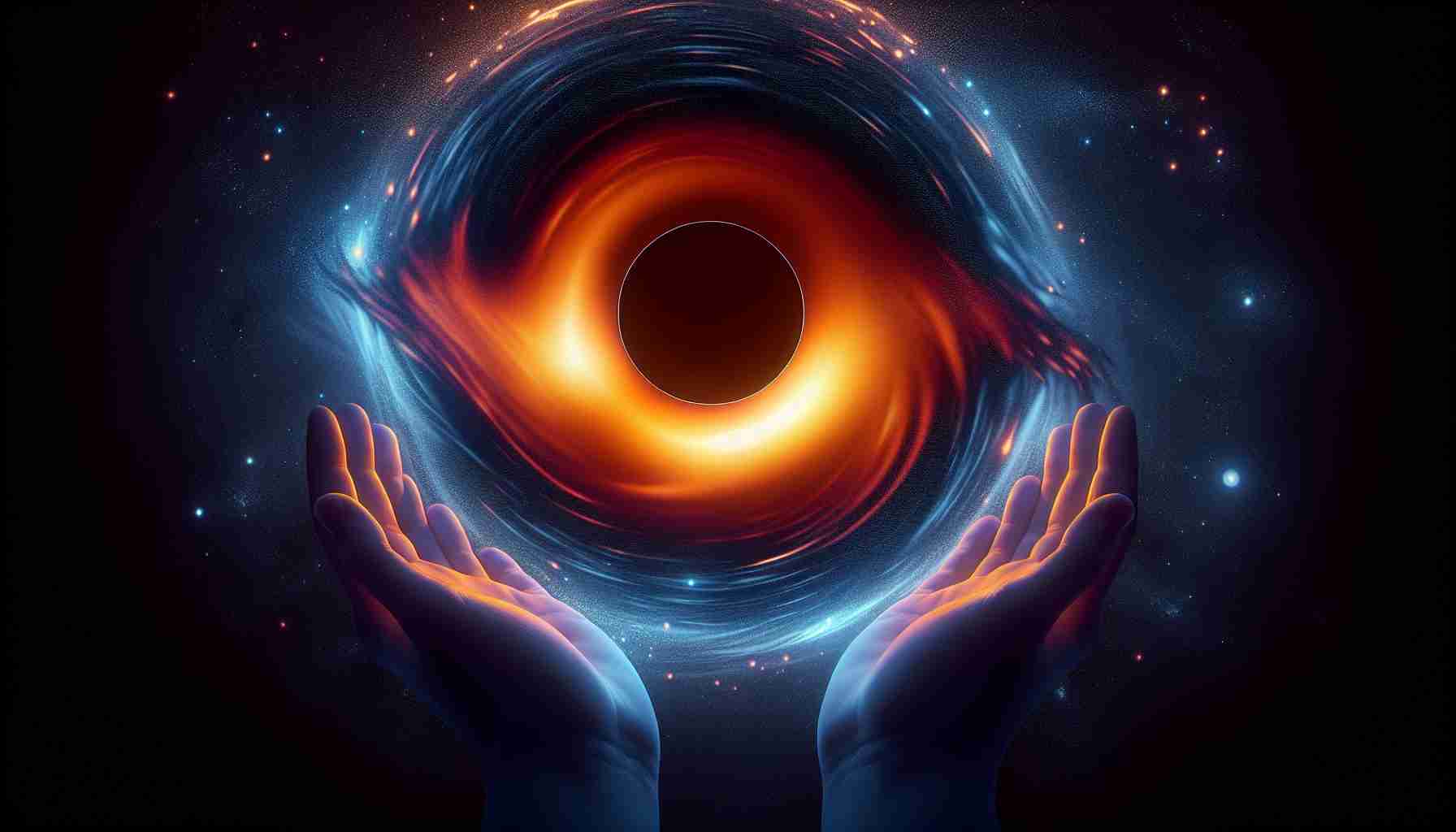New Insights into M87: A Year of Change Around Black Holes
Recent research has shed new light on the enigmatic supermassive black hole M87, located at the center of the Messier 87 galaxy. Scientists have revisited the data initially captured by the Event Horizon Telescope (EHT) and focused on the movement of material surrounding this colossal entity. Published in the journal Astronomy & Astrophysics, the findings offer an unprecedented glimpse into the dynamics of black hole accretion disks.
As matter spirals inward towards a black hole, it creates a swirling “accretion disk.” This disk’s rotation is vital for understanding a black hole’s characteristics, including its mass and orientation. The latest study utilized data from 2017 and 2018 to reconstruct images and models, revealing that the brightest area of the disk experienced a notable shift of 30 degrees within just one year.
The researchers confirmed that the rotational axis of M87 points away from Earth, with their findings suggesting that the outer plasma ring moves in a direction opposite to the black hole’s spin. This observation aligns with existing theories on the behavior of matter in such extreme environments.
This groundbreaking research not only enhances our knowledge of black hole dynamics but also contributes to a broader understanding of galaxy formation and evolution. Ultimately, insights into supermassive black holes could unlock secrets about the cosmos itself, paving the way for future astronomical discoveries.
Cosmic Implications: M87 and the Universe’s Mysteries
The revelations surrounding M87 extend far beyond the astrophysics realm, reshaping our understanding of cosmic evolution. Supermassive black holes are considered linchpins in the formation of galaxies. As they influence surrounding matter through their immense gravitational pull, they play a crucial role in shaping galactic structures and growth, impacting the overall architecture of the universe.
The new findings from the Event Horizon Telescope highlight potential cultural shifts in how we perceive our place in the cosmos. With every discovery regarding black holes, we confront profound questions about existence, matter, and energy — themes that resonate through philosophy, art, and science fiction. These intellectual provocations may inspire future generations to cultivate a deeper curiosity about the universe, encouraging interdisciplinary studies that intersect science, philosophy, and the humanities.
Moreover, understanding black holes has socioeconomic significance. Such research stimulates technological advancements related to high-precision imaging and data processing, which can spill over into various industries, including telecommunications and materials science.
As we anticipate future trends, advancements in satellite technology and international collaborations will enable more precise observations of black holes and their interactions. The long-term implications of these studies may eventually unveil the mysteries of dark matter and dark energy, fundamentally altering our knowledge of physics and the cosmos at large. Such insights could lead to groundbreaking discoveries that not only enhance scientific literature but also address fundamental questions about the nature of our universe and our role within it.
The Shifting Shadows of M87: Unveiling the Secrets of Supermassive Black Holes
New Insights into M87: A Year of Change Around Black Holes
Recent studies into the supermassive black hole known as M87, located at the heart of the Messier 87 galaxy, have provided a deeper understanding of the dynamics surrounding these cosmic leviathans. By analyzing data gathered by the Event Horizon Telescope (EHT) from 2017 and 2018, researchers have made critical observations regarding the behavior of the accretion disk—an essential feature that reveals much about the nature of black holes.
Understanding Accretion Disks
Accretion disks are formed from the material that spirals inward towards a black hole, creating a swirling mass of gas and dust. The properties of these disks, including their rotation and brightness, offer vital clues about black hole characteristics such as mass, spin, and orientation.
Recent Findings
The latest research published in the journal Astronomy & Astrophysics uncovered significant developments in the behavior of the accretion disk surrounding M87. Notably, scientists observed a remarkable 30-degree shift in the brightest part of the disk over a single year. Such a change is unprecedented and speaks volumes about the complex interactions in the vicinity of a black hole.
Key Observations and Their Implications
1. Rotational Axis: The study confirmed that M87’s rotational axis is directed away from Earth, a crucial detail that aligns with theoretical predictions regarding black hole orientation.
2. Outer Plasma Ring Movement: An intriguing finding was that the outer plasma ring appears to move opposite to the spin of the black hole. This counterintuitive movement challenges conventional understanding and offers potential new insights into plasma dynamics in extreme gravitational fields.
Broader Impact on Astronomy
These revelations about M87 not only advance our understanding of individual black holes but also have major implications for galaxy formation and evolution theories. Supermassive black holes like M87 play a significant role in how galaxies are structured, influencing star formation and the distribution of matter.
Future Prospects
As technology and observational techniques improve, the astrophysical community anticipates a wealth of future discoveries regarding black holes. With the continued analysis of EHT data and the potential for new missions focused on high-resolution imaging of black holes, further breakthroughs may soon provide answers to long-standing questions about the universe.
Conclusion
The study of M87* remains critical as scientists seek to unravel the complex behaviors of black holes. Each new insight gained not only enhances our scientific comprehension but also enriches our fascination with the cosmos. For anyone interested in the latest developments in astrophysics, staying informed about black hole research is essential.
For more information on black holes and related astronomical phenomena, visit A&A.
